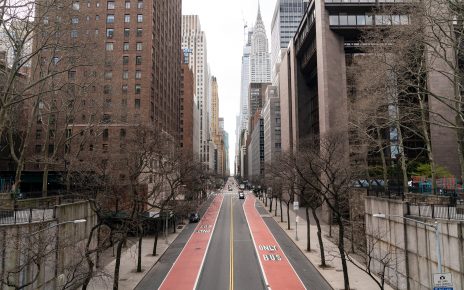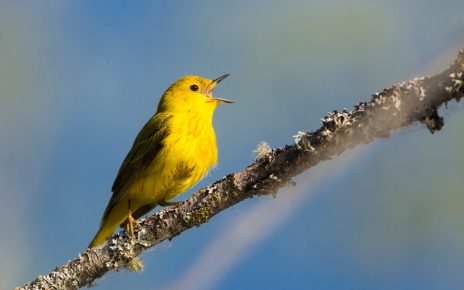The items below are highlights from the free newsletter, “Smart, useful, science stuff about COVID-19.” To receive newsletter issues daily in your inbox, sign up here. Please consider a monthly contribution to support this newsletter.
An interview with Virginia Tech’s Linsey Marr, “one of the few academics in the field of aerosol science who is also an expert in viral transmission,” appeared 7/20/20 at New York magazine’s The Cut. The interview, conducted by Anna Silman, starts with Marr explaining why she still goes to her CrossFit gym (sounds like a lot of fresh air circulates) and that she doesn’t wear a mask while bicycling to work. And her kids now go to summer camp: “I think the risk level is manageable. The most important thing to me was mandatory masks. Some people say, ‘Oh, kids can’t wear masks.’ But they can,” Marr is quoted as saying. Marr currently is deep into a study of the effectiveness of “homemade masks and face coverings,” the piece states. And she reportedly plans to test “modified face shields with a hood” that would allow students to see teachers’ faces, likely improving nonverbal communication. For a recent airplane flight, Marr is quoted as saying “we wore our best masks.”
For an excellent explanation of how antibodies, B cells, and T cells work together in the context of SARS-CoV-2, see freelance science writer Dana G. Smith‘s 7/22/20 piece at Medium’s Elemental. Some highlights: along with antibodies, our bodies make virus-specific T cells to respond to invaders and give us long-term immunity, Smith writes. And “when antibody levels go down, T cells have your back,” she writes. Smith goes on to explain that “helper T cells” and “killer T cells,” which both are types of “memory T cells,” help B cells figure out “what the virus looks like and what kinds and shapes of antibodies to make.” Several studies show that people infected with SARS-CoV-2 make memory T cells that react specifically to it, Smith reports. That’s good because those memory T cells “help guarantee that B cells create high-quality antibodies.” And those memory T cells “can remain in a reservoir in the body for a long time, in some cases for decades,” Smith writes. So, they’d be on hand for a long time to remind our B cells how to replenish the pool of antibodies to SARS-CoV-2, the essay states.
A calculator put out by the Cleveland Clinic estimates a patient’s risk for infection with the new coronavirus and for recovering from it. It’s worth noting that the “pre-testing medications” deemed relevant for the calculator include NSAIDS (non-steroidal anti-inflammatory drugs including ibuprofen, naproxen, and celecoxib), steroids, ACE inhibitors, melatonin, and immune-suppressing treatments. And the “comorbidities” (or underlying conditions) that are deemed relevant include asthma, coronary artery disease, cancer, transplant history, connective tissue disease, and irritable bowel disease. Here’s some more information about the calculator in a 6/16/20 story by Julie Washington at Cleveland.com, based on this 6/10/20 report by scientists in the journal Chest.
You might have read dozens of FAQs by now about precautions for preventing SARS-CoV-2 infection and COVID-19. But for a guide at New York magazine’s The Cut (7/20/20), Brown University economist Emily Oster writes that she consulted more than a dozen doctors and scientists to write “the most logical, rational, simple advice science could offer to just about every question imaginable.” Questions and topics addressed include how much comorbidities (underlying illnesses) matter and mask safety, as well as the risks associated with hair salons, the beach, AirBnb, groceries, packages, doorknobs, airplanes, dining with others at their homes, gyms and bars. Are there places I should avoid at all costs?, the story asks. Oster’s reply: bars.
I wrote a story for The New York Times (7/20/20) about what it means that children appear to have lower rates of catching and spreading SARS-CoV-2. Children definitely have far lower death rates from COVID-19 and are far less likely to have a severe case of COVID-19 than are adults. While the infection and transmission data on younger children (about <10 years old) looks like relatively good news, it is too early to be confident that low rates will remain so, sources told me. The only precaution that my sources said can be relaxed surrounding kids at this point is total isolation at home. And that decision should be made in the context of whether anyone at home is at high risk for severe COVID-19, whether the local spread of the virus is low, and whether the family of visiting children take the same degree of precautions as does one’s own family. In any case, children still should practice social distancing, wear masks in public starting at age 2, and wash their hands frequently, physicians and researchers said.
Scientific American has created a landing page for COVID-19 coverage published by five of its international editions, as well as the flagship English-language publication. The international editions are Spektrum.de (German), Investigacion y Ciencia (Spain/Spanish), Pour La Science (France), Eos Wetenschap (Dutch), and Scientific American Arabic.
Check out this practical, myth-busting piece for Lifehacker (7/14/20) by Beth Skwarecki stating that your mask (cloth, surgical, or N95) doesn’t restrict your breathing. Some people have medical conditions that make it so they shouldn’t wear a mask (i.e. a lung condition; sensory or anxiety issues about fabric over one’s mouth; or some difficulty in removing a mask). A mask might feel uncomfortable at times, but it “isn’t actually restricting your breathing,” Skwarecki writes, noting that medical workers sometimes wear them for more than 12 hours in a row.
In a 7/16/20 podcast for Scientific American, Karen Hopkin covers a 6/10/20 study that shows “we’re not very skilled when it comes to diagnosing infectiousness based on the sound of a sneeze of cough.”
You might enjoy this essay, “Lexicon for a pandemic,” by Jay Martel for The New Yorker (7/13/20).




